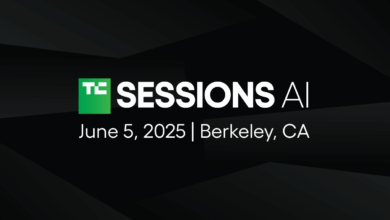Introducing OpenAI o1: A Leap in AI’s Reasoning Abilities for Advanced Problem Solving

OpenAIs new model, Open AI o1 or Strawberry, represents a significant advance in the field of artificial intelligence. It builds on the legacy of previous models, such as OpenAI’s GPT series, and introduces enhanced reasoning skills that deepen problem solving in various areas such as science, coding and math. Unlike its predecessors, which excelled at text processing and generation, the o1 model can explore complex challenges in more depth.
This model enhances AI’s cognitive capabilities, includes rigorous self-monitoring mechanisms, and adheres to ethical standards, ensuring its results are reliable and in line with moral guidelines. With its excellent analytical skills, the o1 model has the potential to transform countless industries and deliver more accurate, detailed, and ethically guided AI applications. This development could significantly increase the usefulness and impact of AI in both professional and educational environments.
The evolution of OpenAI: from GPT-1 to the revolutionary o1 model
Since its founding, OpenAI has developed several groundbreaking models that set new standards for natural language processing and understanding. Efforts began in 2018 with GPT-1, demonstrating the potential of transformer-based models for language tasks. This was followed by GPT-2 in 2019, which significantly improved on its predecessor with 1.5 billion parameters, demonstrating the ability to generate coherent and contextually relevant text.
The release of GPT-3 in 2020 was an important milestone 175 billion parameters making it the largest and most powerful language model at the time. GPT-3’s ability to perform a wide range of tasks with minimal sophistication highlighted the potential of large-scale models in various applications, from chatbots to content creation.
Despite GPT-3’s impressive capabilities, further progress was needed to address its limitations. GPT-3, while powerful, often struggled with complex reasoning tasks and could produce inaccurate or misleading information. In addition, there was a need to improve the safety of the model and align it with ethical guidelines.
The development of the OpenAI o1 model was driven by the need to improve AI’s reasoning capabilities, ensuring more accurate and reliable responses. The o1 model’s ability to spend more time thinking about problems and its fact self-checking feature address these challenges, making it a significant advancement in AI. This new model represents a major step forward in AI technology, promising more remarkable accuracy and usability in both professional and educational environments.
Improved reasoning and training: technical innovations in OpenAI’s o1 model
The OpenAI o1 model stands out because its advanced design significantly increases its ability to tackle complex problems in science, math, and coding. The o1 model builds on the developments of previous AI breakthroughs and uses a mix of reinforcement learning and a method called chain-of-thought processing. This approach allows you to think through problems step by step, just as humans do, making them better at tackling complex reasoning tasks.
Unlike previous models, o1 is designed to respond deeply to every problem it faces. It breaks down complex questions into smaller parts, making them easier to manage and solve. This process improves his reasoning skills and makes his answers more reliable and accurate. This is especially important in areas where precision is crucial, such as academic research or professional scientific work, where one wrong answer can cause major problems.
A crucial part of the development of the o1 model was its training procedure, which used advanced techniques to improve its reasoning. The model is trained using reinforcement learning, which rewards correct answers and punishes incorrect ones, allowing it to refine its problem-solving skills over time. This training helps the model develop the right answers and better understand complex problem areas.
The training also included thought chain processing, which encouraged the model to consider different aspects of a problem before completing it. This method helps build a more robust reasoning framework within the AI, allowing it to excel at multiple challenging tasks. Additionally, training used a large and diverse data set, exposing the model to numerous problem types and scenarios. This exposure is essential for the AI to develop a versatile ability to deal with unexpected or new situations, increasing its usefulness in various areas.
By integrating these technological and methodological improvements, the OpenAI o1 model marks a significant advance toward creating AI systems that more closely mimic human reasoning and problem-solving abilities. This development represents a significant achievement in AI technology and paves the way for future innovations that can further bridge the gap between human and machine intelligence.
Versatile applications of OpenAI’s o1 model
The OpenAI o1 model, recently tested for its capabilities, showed remarkable proficiency in various applications. In reasoning tasks, it performed excellently by using an advanced chain of thought processing to effectively solve complex logical problems, making it an ideal choice for tasks that require deep analytical skills.
Likewise, OpenAI o1 has shown exceptional capabilities, especially in areas that require intensive analytical skills. In particular, o1 scores in the 89th percentile for competitive programming questions exceeds human PhD-level accuracy in benchmarks covering physics, biology, and chemistry problems, and ranks among the top 500 students in the U.S. in U.S. Mathematical Olympiad qualifying tournaments. These achievements underscore its usefulness in academic and professional settings.
The model also demonstrated strong capabilities in dealing with complex problems algebra and geometrymaking it a valuable tool for scientific research and academic use. When coding, however, the o1 preview was less impressive, especially on complex challenges, suggesting that while it can handle simple programming tasks, it may struggle with more nuanced coding scenarios.
Furthermore, his creative writing abilities met another high standard set by his logical reasoning and mathematical skills; the stories generated retained a mechanical tone and needed more nuanced storytelling found in specialized creative writing tools. These detailed tests highlight the model’s strengths in logical reasoning and mathematics and highlight areas for potential improvement in coding and creative writing.
Challenges, ethical considerations and future prospects of OpenAI’s o1 model
Despite its advanced capabilities, the OpenAI o1 model has several limitations. One of the main limitations is the lack of web browsing capabilities, which limits access to real-time information. This affects tasks that require up-to-date data, such as news analysis.
Furthermore, the model lacks multimodal processing. It cannot perform tasks involving multiple data types such as text, images, and audio, limiting its use in image captioning and video analysis. Despite the ability to self-check the facts, the o1 model can still produce inaccurate or misleading information, highlighting the need for continuous improvement to ensure greater accuracy and reliability.
Ethical considerations are also important. The potential misuse of the model to generate fake news, deepfakes and malicious content is one of the main concerns. OpenAI has implemented advanced security features to mitigate these risks. Another ethical issue is the impact on employment, as AI models that can perform complex tasks can lead to job displacement and economic inequality.
The future of AI models like OpenAI o1 offers exciting possibilities. Integrating reasoning capabilities with web browsing and multimodal processing technologies could improve the model’s versatility and performance. Furthermore, improving the model’s self-monitoring capabilities with advanced algorithms could provide greater accuracy. Future iterations could also include more advanced safety features and ethical guidelines, increasing reliability and reliability.
The bottom line
The OpenAI o1 model, with its advanced reasoning capabilities and innovative features, represents a major development in AI technology. By addressing the limitations of previous models and incorporating self-checking of the facts and enhanced security measures, o1 sets a new standard for accuracy and reliability. Its versatile applications in healthcare, finance, education and research highlight its transformative potential.
As AI continues to evolve, the o1 model leads to future improvements and promises to improve productivity, efficiency and quality of life, while addressing the ethical challenges that such powerful technology poses.






